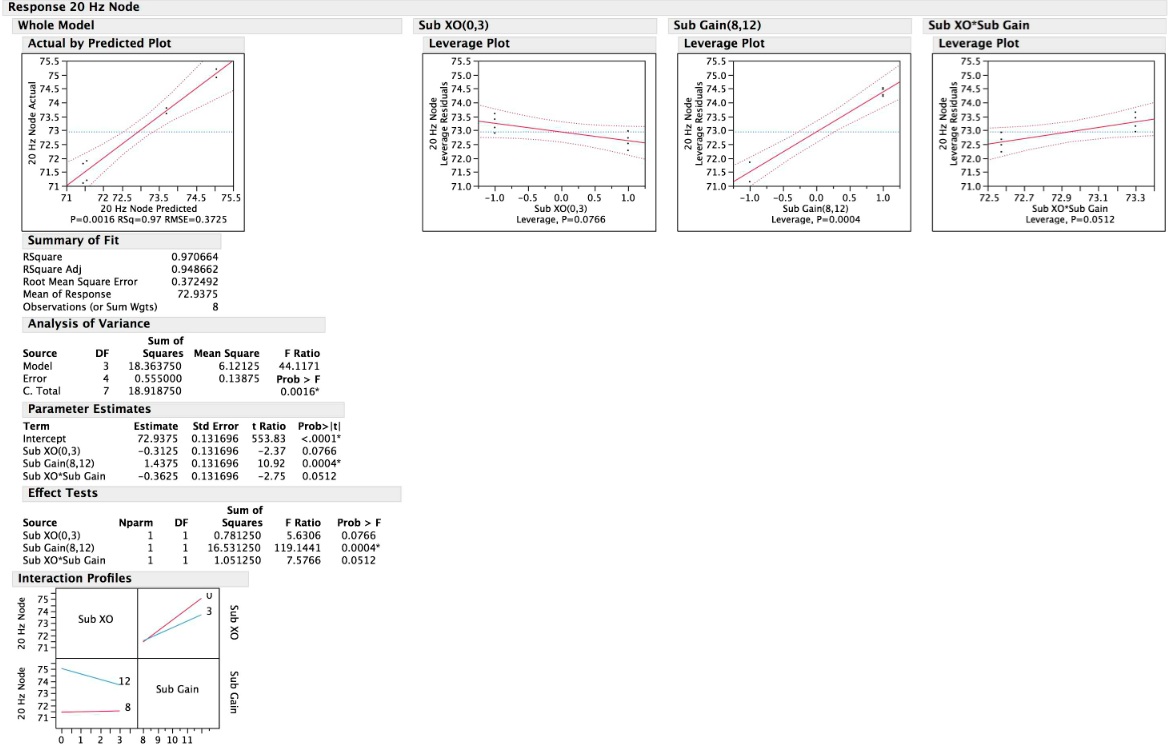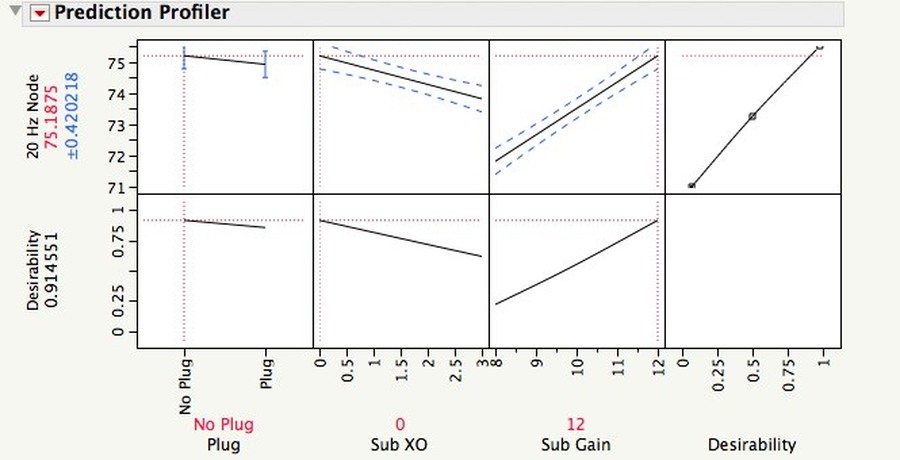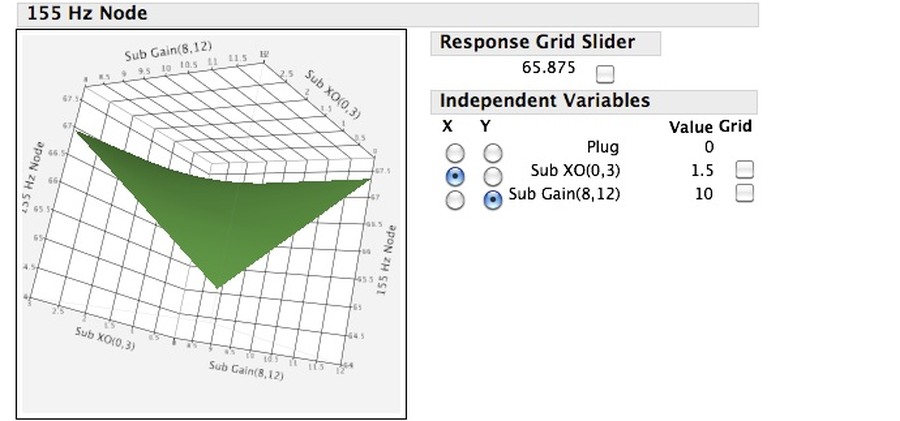Puma Cat
Well-known member
- Thread Author
- #1
Okaaay....now that I've settled in with the Harbeth 30.2s, have 'em set up on the stands the way I like, I thought it was time to break out good 'ole Room Equalization Wizard (aka REW) and start doin' some measurements with an end ultimately to doing a DOE (Design of Experiments) to optimally integrate my REL R-305 with the 30.2s
The 30.2s are on Resonant Woods "Curved Series" maple stands using Brook Jensen's (of Resonant Woods) hard phenolic ball feet screwed-down & locked into the 1/4-20 threaded inserts in the bottom of the stands. The stands are resting on a particle board platform that has been stained with black Varathane urethane stain.
The speakers, stands, ball footers and the stand platform are shown here:
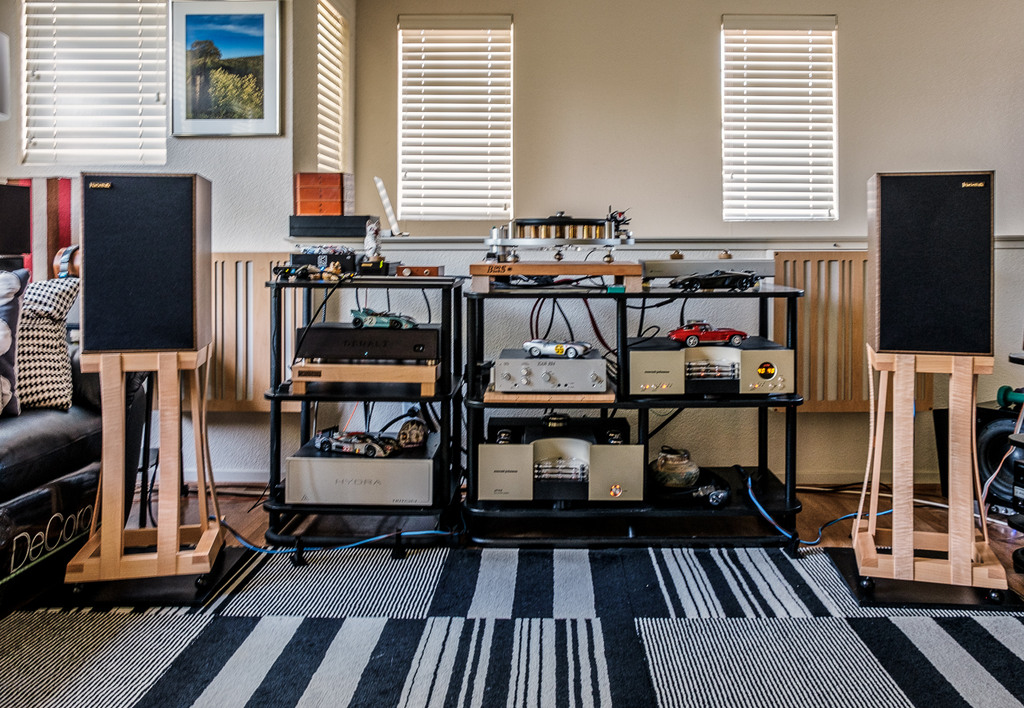
The phenolic ball feet, which are very hard (same material as billiard balls), function analogously to speaker stand spikes in that there is a very small contact point between the phenolic ball-footer & the stand platform; they are leveled and very stable. The function of the particle board platform is to provide a firm, stable, non-rocking & "non-resonant and non-ringing" platform for the stands to sit upon on the carpet (this is my living room, not a man-cave). I tried many different materials, from regular wood to porcelain floor tiles to travertine stone, and a common hard dense particle board platform simply sounded the best.
The phenolic ball footers on the particle board platforms are shown.
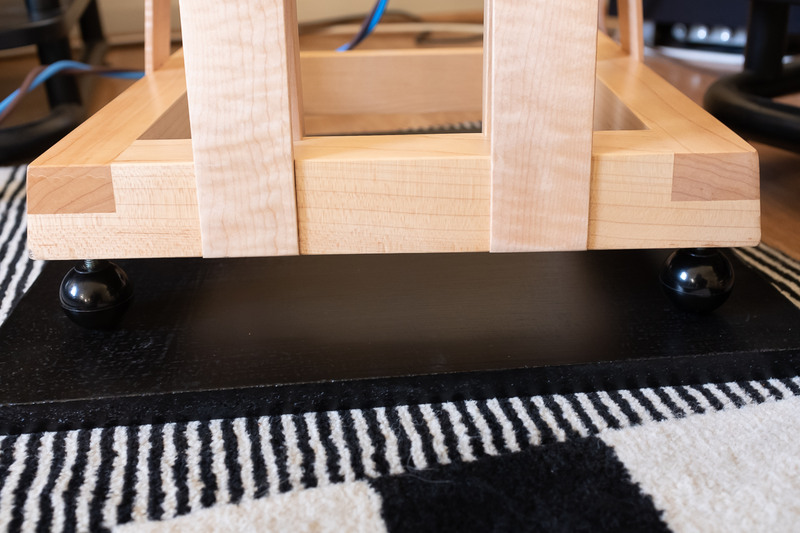
The Harbeths are coupled to the Resonant Woods stands with four 1.5" square pieces of beeswax cloth at each corner. Additionally, there is a small 4" X 1/2" strip of beeswax cloth on the rear support rail at the back of the stands. The beeswax cloth serves to couple the speakers to the stands, as well as provide a "constrained layer"- style damping. The stands are "open top" so that the cabinets can do their Alan Shaw "tuned cabinet resonance" thang. The beeswax cloth also couples the speakers to the stands so well that you can practically lift the stands by lifting the speakers. Moreover, it sounds really good.
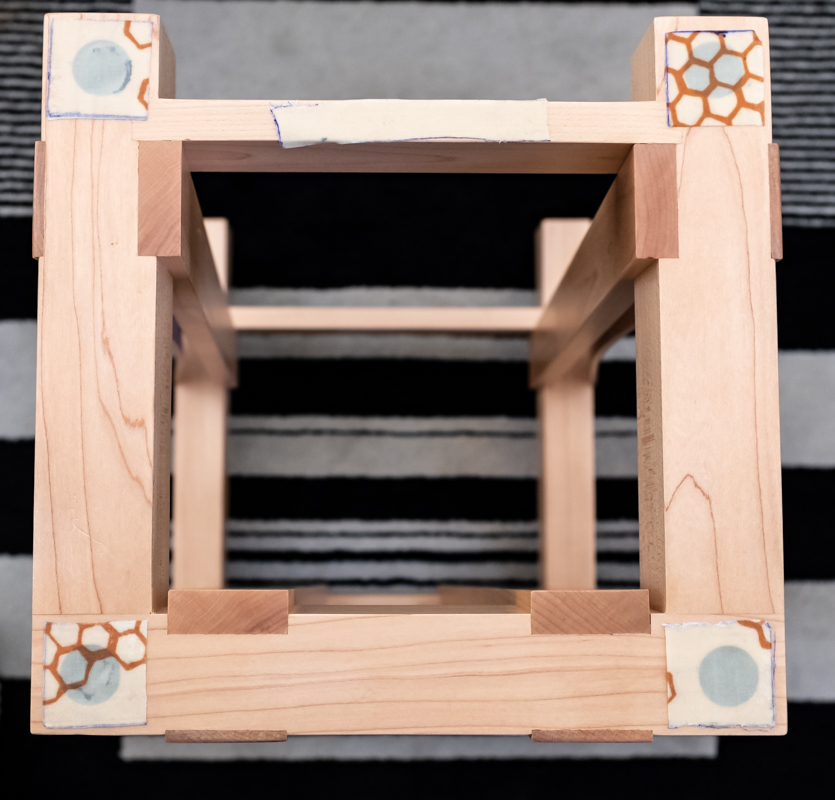
With that, I set up Room Equalization Wizard and did a very quick first-pass test sweep, just to check that things are working with the REL....
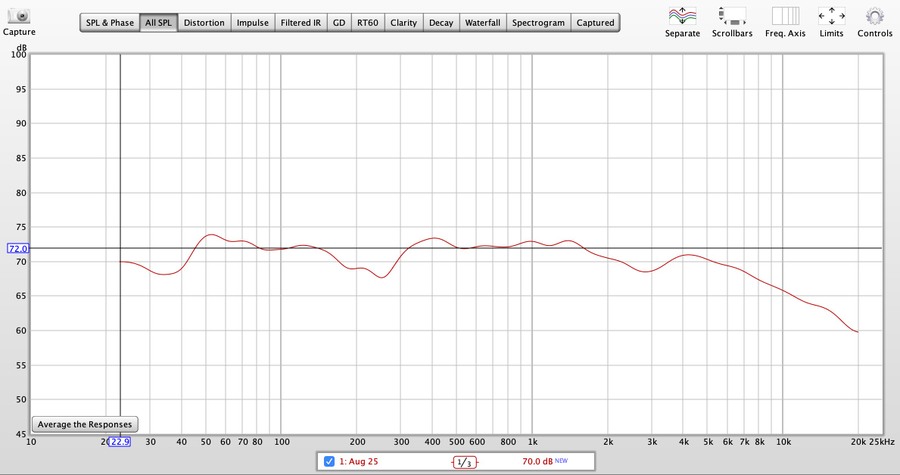
Not bad for a very first pass just to check settings and gear.
Next, I'll see if I can smooth out some peaks and nulls and get the response above 4K up a skosh...
More later, stay tuned....
The 30.2s are on Resonant Woods "Curved Series" maple stands using Brook Jensen's (of Resonant Woods) hard phenolic ball feet screwed-down & locked into the 1/4-20 threaded inserts in the bottom of the stands. The stands are resting on a particle board platform that has been stained with black Varathane urethane stain.
The speakers, stands, ball footers and the stand platform are shown here:

The phenolic ball feet, which are very hard (same material as billiard balls), function analogously to speaker stand spikes in that there is a very small contact point between the phenolic ball-footer & the stand platform; they are leveled and very stable. The function of the particle board platform is to provide a firm, stable, non-rocking & "non-resonant and non-ringing" platform for the stands to sit upon on the carpet (this is my living room, not a man-cave). I tried many different materials, from regular wood to porcelain floor tiles to travertine stone, and a common hard dense particle board platform simply sounded the best.
The phenolic ball footers on the particle board platforms are shown.

The Harbeths are coupled to the Resonant Woods stands with four 1.5" square pieces of beeswax cloth at each corner. Additionally, there is a small 4" X 1/2" strip of beeswax cloth on the rear support rail at the back of the stands. The beeswax cloth serves to couple the speakers to the stands, as well as provide a "constrained layer"- style damping. The stands are "open top" so that the cabinets can do their Alan Shaw "tuned cabinet resonance" thang. The beeswax cloth also couples the speakers to the stands so well that you can practically lift the stands by lifting the speakers. Moreover, it sounds really good.

With that, I set up Room Equalization Wizard and did a very quick first-pass test sweep, just to check that things are working with the REL....

Not bad for a very first pass just to check settings and gear.
Next, I'll see if I can smooth out some peaks and nulls and get the response above 4K up a skosh...
More later, stay tuned....

